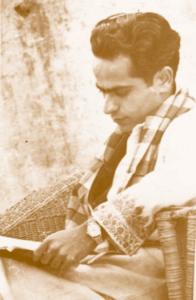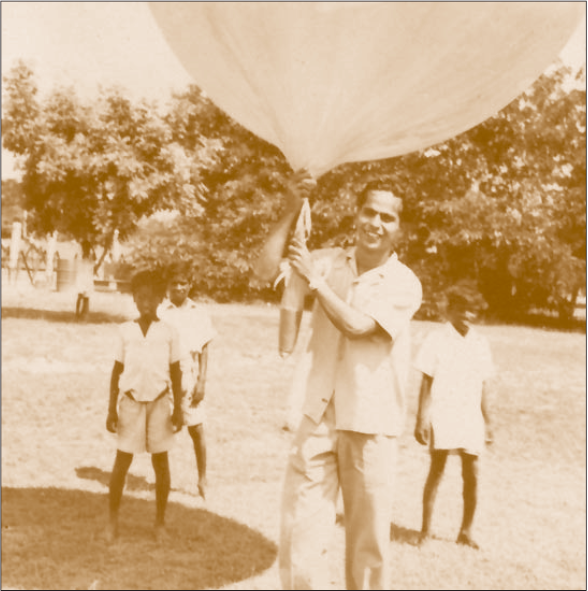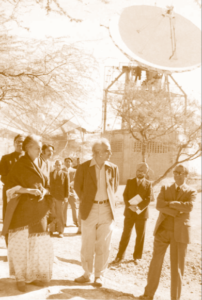Remembering Yash Pal, the People’s Scientist Who Left an Indelible Mark on India!
Yash Pal was fascinated by the logic required to solve geometrical problems. He says in his biography that he would have missed this joy if he had not discovered it on his own.

Can you think of a scientist who believes that science should be taught to the people for it to be understood and not for it to be reciprocated and that teaching science to all is how we would grow as a nation?
Prof Yash Pal was a renowned scientist, known not just for his numerous contributions to the scientific community, but also to the general public. No wonder he is fondly remembered as ‘The People’s Scientist’.
A dynamic personality, Prof Pal was a scientist, a manager, an educator, a communicator and most importantly, a clairvoyant for science and its teachings.

Yash was born in colonial India on 26th November 1926 in the district of Jhang, which is currently in Pakistan. He soon moved to Madhya Pradesh as his father had acquired a job in Jabalpur. This is where his interest in science and mathematics took a versatile form. Due to the change in education, he had to learn a lot of things by himself, which included Euclidean Geometry.
He was fascinated by the logic required to solve geometrical problems. He says in his biography that he would have missed this joy if he had not discovered it on his own.
During his school years, he had a teacher named Pawar who taught mathematics, geography and physics and emphasised understanding rather than memorising–a trait that Yash would carry on till the end of his life.
Yash went to study in a government college, where he picked up the habit of reading. Books on Jawaharlal Nehru, Mahatma Gandhi, Leo Tolstoy, Ruskin Bond, Thoreau and Tagore soon filled his desk. It is when he was immersed in these books that he asked himself–What do I want to do with my life?

Soon, India saw its partition in 1947, when Yash had just finished BSc and was taking up MSc in Delhi. The riots and the agitation of the people were running high.
Amongst all the commotion, Yash Pal recalls how there was hope amidst all the adversity. He says in his biography, “It was a time of great tragedy, but also a time of tremendous hope, and something new was beginning to happen.”
As his MSc was coming to an end, he applied to the Tata Institute of Fundamental Research (TIFR). This would undoubtedly become a start to his long research career. He moved to Mumbai and studied nuclear emulsion techniques. This photographic technique allows scientists to study the interaction of high energy particles in cosmic rays with other specified particles.
It was at TIFR that Yash found an interest in cosmic rays and did numerous experiments with balloon flights, which were previously not conducted at the institution.

While pursuing his PhD from the Massachusetts Institute of Technology (MIT), he explored cosmic rays in depth and researched about particle mixture theories. After completing his doctorate, he returned to India to work with TIFR on nuclear emulsions with his own team of researchers and students.
It was in 1972 that Prof Satish Dhawan approached him to take up the reins for setting up the Space Applications Centre (SAC) in Ahmedabad. Yash was convinced and took a five-year deputation from TIFR to build the SAC–a task which was gargantuan and would take up all his blood and sweat to be completed.

“I had never worked this hard; I did not know what happened. Firstly, the Satellite Instructional Television Experiment (SITE) was very much delayed. In fact, I remember some people came to see me as soon as I was there and told me that people are saying that those who have joined the SITE team better get off before the ship sinks!” recalls Pal.
But his determination didn’t let him give up. Due to his consistent and continued efforts, the SAC was completed. Simultaneously, Vikram Sarabhai’s dream project–the Satellite Instructional Television Experiment or SITE, also took off due to Yash Pal’s contributions.
SITE’s main objective was mass education. And for this, they had to carry out surveys of how it benefitted the people. For this, they had to travel to villages to document change. It was here that Yash found the importance to advocate science to all people.
He had the opportunity to make science programmes for children with Doordarshan. Although thrilled, he was rather puzzled about how to go about it.
Prof Yash Pal says in his biography, “I had been to villages, and I had by that time started believing that science can be learnt only through doing. You must have experiments, and you must do things to learn science properly. But in villages there were one/two-room schools, with no equipment; some did not even have a blackboard. If we had to make science programmes for them, what were they going to do?”

He sought inputs from TIFR and MIT and the response was overwhelming. Soon, production began for the show Turning Point which was an immense success with the masses.
The objective of the show was clear– that science is everywhere. And for children to learn, their immediate environment can be questioned, understood, explained, using scientific methods. And most importantly, to emphasise the learning of the scientific method, more than the mere transfer of information.
With the programme, Yash Pal became a favourite among the viewers. He would answer people’s questions each week, explaining things in such a manner that invoked curiosity and made the imparting of knowledge seamless. His insights and brilliance influenced a generation of innovators.
The programme ran for 150 episodes and had film actors like Naseeruddin Shah as hosts.
In 1976, he was awarded the Padma Bhushan by the Government of India for his contribution to science and space technology. In 1980, he was awarded the Marconi Fellowship in recognition of his “wise and humane leadership in applying modern communications technology to meet the needs of isolated rural villagers in India.”

Yash, for the most part, was concerned with education in India. According to him, it was not simply delivering knowledge but acquiring, constructing and creating knowledge. His idea of good education was “drastically reducing loads of sterile information and giving emphasis on comprehension and understanding, and sharing the joy of understanding.”
Prof Yash Pal passed away at the age of 90 on July 24th, 2017. His death left a mark on the scales of progress in India. But his work remains intact with the development India has made.
Hrushikesh Senapaty, Chairman, NCERT, told Livemint, “Prof Yash Pal loved kids and told many times that child-centric learning is a must to improve education outcome. He pushed for more visualization of text books to make them fun and reduce the impact of rote learning.”
With all his love towards imparting knowledge, Prof Yash Pal will surely go down as a scientist who changed how people thought about science.
(Edited by Shruti Singhal)
Hey, you may also like: 10 Incredible Facts About Dr Vikram Sarabhai, the Father of the Indian Space Programme
Like this story? Or have something to share?
Write to us: [email protected]
Connect with us on Facebook and Twitter.
NEW: Click here to get positive news on WhatsApp!
If you found our stories insightful, informative, or even just enjoyable, we invite you to consider making a voluntary payment to support the work we do at The Better India. Your contribution helps us continue producing quality content that educates, inspires, and drives positive change.
Choose one of the payment options below for your contribution-
By paying for the stories you value, you directly contribute to sustaining our efforts focused on making a difference in the world. Together, let’s ensure that impactful stories continue to be told and shared, enriching lives and communities alike.
Thank you for your support. Here are some frequently asked questions you might find helpful to know why you are contributing?


This story made me
- 97
- 121
- 89
- 167










